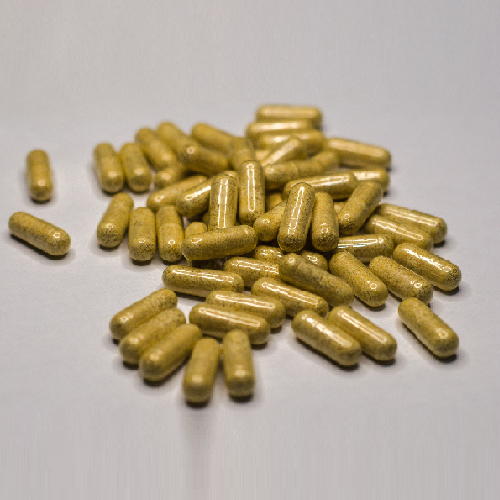
Postbiotics
Alternative names: Bacterial Lysate, Bacterial Tyndallizate, Biogenics, Cell Supernatant, Culture Supernatant, Ghost Probiotics, Heat-Inactivated Probiotics, Heat-Killed Probiotics, Heat Stabilized Probiotics, Metabiotics, Non-Viable Bacterial Products, Non-Viable Probiotics, Parabiotics, Paraprobiotics, Parapsychobiotics, Post-Biotics, Spent Culture Medium, Tyndallized Probiotics, Zombie Probiotics
Actions: General, Antibacterial, Anti-cancer, Anti-inflammatory, Gastrointestinal, Immunological, Metabolic, Neurological, Nutritional
Background
Postbiotics are similar to probiotics. They are made of whole and partial microorganisms that offer health benefits. But unlike probiotics, they are not alive.
The term "postbiotics" is somewhat controversial. Generally, a postbiotic must be "inactivated" or killed, and it must be clear how this was done. Also, the postbiotic must provide health benefits. Lactobacillus rhamnosus and Bifidobacterium bifidum that are no longer alive would be considered postbiotics.
People use postbiotics for stomach conditions, allergies, diabetes, high blood pressure, and many other conditions, but the definition of "postbiotics" is still unclear, so there is no good scientific evidence to support most of these uses.
Postbiotics as a group aren't regulated by the FDA. Don't confuse postbiotics with probiotics. These are not the same.
The term "postbiotics" is somewhat controversial. Generally, a postbiotic must be "inactivated" or killed, and it must be clear how this was done. Also, the postbiotic must provide health benefits. Lactobacillus rhamnosus and Bifidobacterium bifidum that are no longer alive would be considered postbiotics.
People use postbiotics for stomach conditions, allergies, diabetes, high blood pressure, and many other conditions, but the definition of "postbiotics" is still unclear, so there is no good scientific evidence to support most of these uses.
Postbiotics as a group aren't regulated by the FDA. Don't confuse postbiotics with probiotics. These are not the same.
Safety Safety definitions
Postbiotics products might contain a wide range of ingredients. There isn't enough reliable information to know if postbiotics are safe, but some believe they might be safer than probiotics because they aren't alive. Examples of microorganisms that have been used as postbiotics include inactivated Brewer's yeast, Bacillus coagulans, Bifidobacterium bifidum, Lacticaseibacillus paracasei, Lacticaseibacillus rhamnosus, Lactiplantibacillus plantarum, Lactobacillus acidophilus, and Limosilactobacillus reuteri. Review these topics to learn more.
Special Precautions & Warnings:
Pregnancy and breast-feeding: There isn't enough reliable information to know if postbiotics are safe to use while pregnant or breast-feeding. Stay on the safe side and avoid use.Effectiveness
Effective Effectiveness definitions
There is interest in using postbiotics for a number of purposes, but the definition of "postbiotics" is still unclear, so there isn't enough reliable information to say whether they might be helpful. Examples of microorganisms that have been used as postbiotics include inactivated Brewer's yeast, Bacillus coagulans, Bifidobacterium bifidum, Lacticaseibacillus paracasei, Lacticaseibacillus rhamnosus, Lactiplantibacillus plantarum, Lactobacillus acidophilus, and Limosilactobacillus reuteri. Review these topics to learn more.
Dosing & administration
Postbiotic products might contain a wide range of ingredients. Generally, to be called a postbiotic it must be clear how a microorganism is "inactivated" or killed, and health benefits must be confirmed. These products have been taken by mouth, applied to the skin, and inhaled through the nose. Examples of microorganisms that have been used as postbiotics include inactivated Brewer's yeast, Bacillus coagulans, Bifidobacterium bifidum, Lacticaseibacillus paracasei, Lacticaseibacillus rhamnosus, Lactiplantibacillus plantarum, Lactobacillus acidophilus, and Limosilactobacillus reuteri. Review these topics to learn more.
Interactions with pharmaceuticals
See specific microorganisms for interactions with medicines.
Interactions with herbs & supplements
See specific microorganisms for interactions with herbs and supplements.
Interactions with foods
See specific microorganisms for interactions with foods.
vital.ly has licensed monographs from TRC Healthcare.
This monograph was last reviewed on 14/02/2025 11:00:00. Monographs are reviewed and/or updated multiple times per month and at least once per year.
Natural Medicines disclaims any responsibility related to medical consequences of using any medical product. Effort is made to ensure that the information contained in this monograph is accurate at the time it was published. Consumers and medical professionals who consult this monograph are cautioned that any medical or product related decision is the sole responsibility of the consumer and/or the health care professional. A legal License Agreement sets limitations on downloading, storing, or printing content from this Database. No reproduction of this monograph or any content from this Database is permitted without written permission from the publisher. It is unlawful to download, store, or distribute content from this site.


